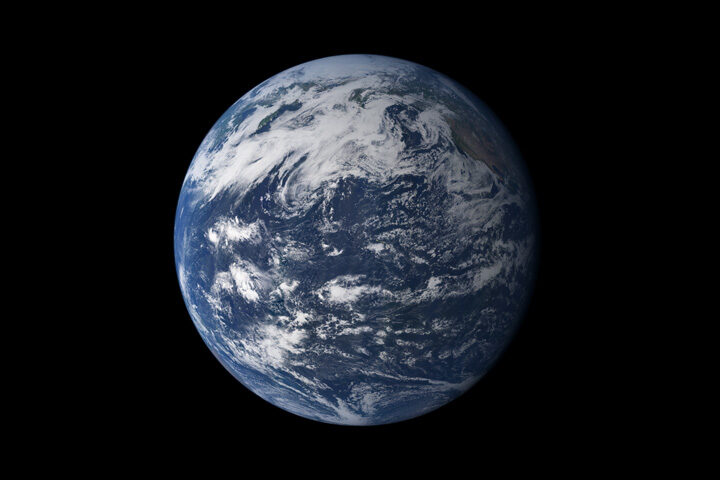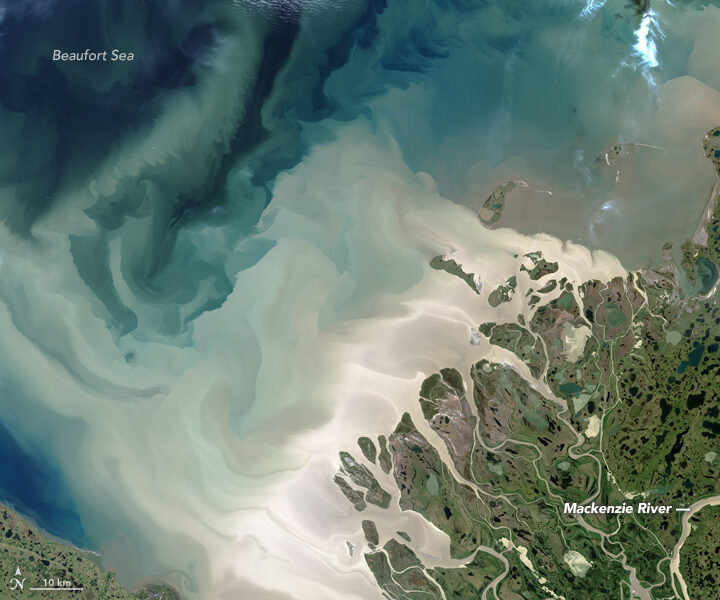
From afar, Earth’s oceans look quite blue. But closer inspection reveals a much more complex palette. Tiny particles floating in the water (phytoplankton, pollution, and sediments) can change how light is absorbed and scattered, which affects the apparent color of the water near its surface.
Color is useful for scientists who model how the oceans might evolve with time and climate change. “It’s cool to see how all of these global Earth models—completely different when it comes to their complexity—use the color of the ocean to explain the changes in the future,” said Ivona Cetinic, an ocean ecologist at NASA’s Goddard Space Flight Center.
In one example, NASA-funded researchers showed large areas of the planet’s blue water becoming even bluer. The change would come from a decline in green-pigmented phytoplankton as the planet warms. You can read more about that study in Nature Communications, or check out some of the media coverage.

In a different study published in Geophysical Research Letters (GRL), researchers from NASA Goddard found that the “yellowing” of coastal waters could lead to cooler global ocean temperatures. Yellow-brown waters already show up around some coastal areas where rivers meet the ocean—such as the outwash from the Mackenzie River in northern Canada (above). Pulses of water from the spring melt move a huge amount of dissolved organic material and sediment into the Beaufort Sea. Coastal waters could become yellower over time if increases in precipitation and melting on land wash more dissolved organic material out to the ocean.
The researchers ran simulations that incorporated NASA ocean-color data and showed that after 300 years, the top 700 meters of a “yellow” ocean with dissolved organic material and plankton would be colder than a “green” phytoplankton-only ocean. That’s because yellow water lets less light and heat pass through the top layer of water, keeping it cooler below.
The authors wrote in the GRL paper: “We suggest that an increase in these yellowing materials behaves as a buffer that mitigates some effects of a warming climate.”




